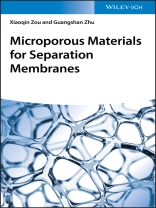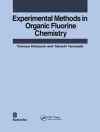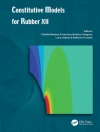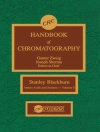A guide to membrane separation based on a variety of porous materials with promising separation applications
Microporous Materials for Separation Membranes offers an in-depth guide that explores microporous materials? potential for membrane applications. The authors?two experts on the topic?examine a wide range of porous materials that have application potential including: microporous silica, porous carbons, zeolites, metal-organic frameworks (MOFs), and porous organic frameworks (POFs).
Comprehensive in scope, the book covers a broad range of topics on membrane separations such as: hydrogen recovery, carbon dioxide capture, air purification, hydrocarbon separation, pervaporation, and water treatment. In addition, this up-to-date resource explores the most recent materials for preparing microporous membranes and explores the most promising applications for industrial use. This important book:
-Examines the use of microporous materials as membranes to perform with different gases and liquids
-Offers an overview of the basic knowledge of membrane separation and an intense examination of separations
-Describes the state-of-the-art of membrane separation with porous materials
-Highlights the most promising applications of industrial interest
Written for scientists working in the fields of membranes, gas and liquid, Microporous Materials for Separation Membranes offers a valuable guide to the potential of microporous materials for membrane applications.
Table des matières
Preface xi
1 Introduction of Microporous Membranes 1
1.1 Introduction 1
1.2 Historical Development of Membranes 1
1.3 Microporous Materials 4
1.3.1 Carbonaceous Materials 4
1.3.1.1 Activated Carbon 5
1.3.1.2 Carbon Nanotubes 8
1.3.1.3 Graphene 11
1.3.2 Microporous Silica 14
1.3.3 Zeolites 16
1.3.4 Metal–Organic Frameworks 19
1.3.5 Highly Porous Polymers 21
1.3.5.1 High Free Volume Polymers 21
1.3.5.2 Porous Organic Frameworks 23
1.4 Fundamentals of Membrane Separation 27
1.4.1 Membrane Definition 27
1.4.2 Transport Theory 27
1.4.2.1 Membrane Transport for Gas Systems 27
1.4.2.2 Membrane Transport for Liquid Systems 29
1.4.2.3 Transport Mechanism in ED Membrane 32
1.5 Membrane Configurations 35
1.5.1 Membrane Structures 35
1.5.2 Preparation Techniques 36
1.5.2.1 Solution Casting 36
1.5.2.2 Melt Extrusion 36
1.5.2.3 Spinning 37
1.5.2.4 Spin Coating 37
1.5.2.5 Slip Coating Sintering 37
1.5.2.6 Sol–Gel Technique 37
1.5.2.7 Carbonization 38
1.5.3 Membrane Technology 38
1.5.4 Membrane Modules 40
1.5.4.1 Plate-and-Frame Module 41
1.5.4.2 Tubular Membrane Module 41
1.5.4.3 Spiral Wound Module 41
1.5.4.4 Hollow Fiber Module 42
1.6 Features of Microporous Membranes 43
1.7 Conclusions 45
References 45
2 Microporous Silica Membranes 53
2.1 Introduction 53
2.2 Membrane Synthesis 53
2.2.1 Sol–Gel Synthesis Method 54
2.2.2 Templating Approach 55
2.2.3 Chemical Vapor Deposition 56
2.3 Intermediate Layers 57
2.4 Support 58
2.5 Modification of Silica Membranes 58
2.6 Microporous Silica Membranes for Hydrogen Separation 60
2.7 Microporous Silica Membranes for Carbon Dioxide Separation 63
2.8 Microporous Silica-Based Membranes for Pervaporation Process 66
2.9 Microporous Silica-Based Membranes for Desalination 69
2.10 Conclusions and Future Trends 72
References 73
3 Carbon-Based Membranes 77
3.1 Introduction 77
3.2 Carbon Membrane Preparations 78
3.2.1 Carbon Molecular Sieve Membranes 78
3.2.1.1 Precursors of Carbon Molecular Sieves 79
3.2.1.2 Pyrolysis Environment for CMS Membranes 80
3.2.1.3 Pretreatments of CMS Membranes 81
3.2.1.4 Posttreatment of CMS Membranes 81
3.2.2 Module Construction of Carbon Membranes 82
3.3 Selective Surface Flow Membranes 84
3.4 Advantages and Disadvantages of Carbon Membranes 86
3.4.1 Advantages of Carbon Membrane Versus Conventional Polymer Membrane 86
3.4.2 Disadvantages of Carbon Membranes 87
3.5 Carbon Nanotubes 87
3.5.1 Types of CNT Membranes 87
3.5.2 CNT Functionalization 90
3.6 Porous Graphene 92
3.7 Carbon-Based Mixed Matrix Membranes (MMMs) 99
3.8 New Advances and Challenging Aspects 102
3.8.1 Concentration Polarization 103
3.8.2 Fouling 104
3.8.3 Mechanical Stability 105
3.8.4 Scalability 106
3.8.5 Cost 106
3.9 Conclusions 107
References 107
4 Microporous Membranes for Water Purification 115
4.1 Introduction 115
4.2 Types and State-of-the-Art Microporous Membranes in Water Purification 116
4.3 Removal of Water Contaminants (Inorganics, Organics, Biological) 118
4.3.1 Inorganic Pollutants 118
4.3.2 Organic Pollutants 124
4.3.3 Biological Pollutants 131
4.4 Membrane Desalination 134
4.5 Membrane Surface Engineering 144
4.5.1 Membrane Surface Engineering Using Nanoparticles 147
4.5.2 Using Hydrophilic Components to Hydrophobic Membranes 151
4.6 Conclusions 153
References 153
5 Mixed Matrix Membranes 161
5.1 Introduction 161
5.2 Principles of Mixed Matrix Membranes 161
5.2.1 Polymer Phase 162
5.2.2 Solvents 163
5.2.3 Fabrication and Drying Techniques for MMMs 163
5.2.4 Mass Transport Theory and Models in MMMs 166
5.3 MMMs Made of Zeolites 169
5.3.1 Interfacial Modification with Silane Agents 172
5.3.2 Addition of Low Molecular Weight Materials 172
5.3.3 Annealing 173
5.3.4 Priming Method 173
5.4 MOF-Based MMMs 173
5.4.1 Ui O-66 Series 174
5.4.2 Zeolitic Imidazolate Frameworks 176
5.4.3 MIL Series 177
5.4.4 Cu-MOFs 178
5.4.5 MOF-74 Series 179
5.5 POF-Derived MMMs 181
5.6 MMMs Containing Other Porous Fillers 184
5.7 Conclusions 189
References 189
6 Zeolite Membranes 195
6.1 Introduction 195
6.2 Synthesis Techniques for Zeolite Membranes 196
6.3 Crystal Growth in Zeolite Layers 198
6.3.1 Conventional Hydrothermal Synthesis 198
6.3.2 Two-Step Crystallization 199
6.3.3 Crystallization by Microwave Heating 200
6.3.4 Use of Intergrowth Supporting Substances 201
6.3.5 Growth of Oriented Zeolite Layers on Supports 205
6.3.6 Bilayer Membranes 207
6.3.7 Functional Zeolite Films 208
6.3.8 Mixed Matrix Membranes 210
6.4 Microstructures of Zeolite Films 210
6.5 Membrane Characterizations 211
6.6 Conclusions and Outlook 215
References 216
7 Gas Separations with Zeolite Membranes 225
7.1 Introduction 225
7.2 H2 Recovery 226
7.3 Air Separation 228
7.4 CO2 Capture 230
7.5 N2/CH4 Separation 235
7.6 H2S Capture 238
7.7 Kr/Xe Separation 238
7.8 Post-modification of Zeolite Membranes 245
7.9 Conclusions and Outlook 247
References 248
8 Pervaporation with Zeolite Membranes 255
8.1 Introduction 255
8.2 Pervaporation Process 255
8.3 Alcohol Dehydration 260
8.4 Organic–Organic Separation 264
8.5 Acid Separation 266
8.6 Membrane Reactors for Various Separations 268
8.6.1 Water Separation 268
8.6.2 Hydrogen Separation in Dehydrogenation Reactions 271
8.6.3 Hydrogen Separation in Water–Gas Shift Reaction 273
8.6.4 Hydrogen Separation in Syngas Production 273
8.6.5 Methanol Separation in Hydrogenation Reaction 274
8.6.6 Metathesis of Propene 274
8.6.7 Separation of Isomers in Isomerization Reaction 275
8.6.8 Other Separations 277
8.7 Conclusions and Outlook 277
References 278
9 MOF Membranes and Their H2 Separation Properties 287
9.1 Introduction 287
9.2 Fabrication of MOF Membranes 288
9.2.1 Fabrication Methods for Polycrystalline Membranes 288
9.2.1.1 Direct Synthesis 288
9.2.1.2 Seeded Growth 292
9.2.1.3 Electrochemical Deposition 294
9.2.1.4 Stepwise Dosing of Reagents 296
9.2.1.5 Assembly of MOF Nanocrystals 296
9.2.1.6 Chemical Vapor Deposition 296
9.2.2 Fabrication Methods for SURMOF Membranes 296
9.2.2.1 Liquid-Phase Epitaxy 296
9.2.2.2 Interfacial Synthesis 298
9.3 Controlling and Characterizing MOF Membranes 300
9.3.1 Powder X-Ray Diffraction 302
9.3.2 Nitrogen Adsorption and Desorption 303
9.3.3 Thermal Gravimetric Analysis 304
9.3.4 Scanning Electron Microscopy 305
9.3.5 Inductively Coupled Plasma Optical Emission Spectroscopy 306
9.3.6 NMR Spectroscopy 306
9.3.7 SS-NMR Spectroscopy 307
9.3.8 Diffuse Reflectance Infrared Fourier Transform Spectroscopy 307
9.4 Pore Chemistry for H2 Separation 308
9.5 Conclusions 316
References 316
10 CO2 Capture with MOF Membranes 323
10.1 Introduction 323
10.2 CO2 Capture and Separation Strategies 324
10.2.1 Post-combustion CO2 Capture 325
10.2.2 Pre-combustion CO2 Capture 326
10.2.3 Oxy-fuel Combustion 326
10.2.4 Chemical Absorption 327
10.2.5 Physical Absorption 328
10.2.6 Physical Adsorption 330
10.2.7 Cryogenic 331
10.2.8 Membrane Technology 331
10.2.8.1 Polymeric Membranes 332
10.2.8.2 Inorganic Membrane 333
10.2.8.3 Zeolite Membrane 333
10.2.8.4 Silica Membrane 334
10.2.8.5 MOF Membrane 334
10.2.9 Chemical-Looping Combustion 334
10.3 Chemistry of MOFs for CO2 Recognition 335
10.3.1 Unsaturated Metal Sites 335
10.3.2 Polar Functional Groups 336
10.3.3 Pore Size and Function Control 339
10.3.4 Core–Shell MOF Structure 341
10.3.5 Alkylamine Incorporation 341
10.4 Membrane Design for CO2 Separation 344
10.5 Conclusions 353
References 354
11 MOF Membranes for Vapor or Liquid Separation 361
11.1 Introduction 361
11.2 Selective Separation of Chemicals Via Pervaporation 364
11.2.1 Polycrystalline MOF Membranes for Pervaporation 365
11.2.2 MOF-Based MMMs for PV Process 373
11.3 Organic Solvent Nanofiltration 381
11.4 Chiral Resolution 394
11.5 Stability of MOF Membranes 401
11.6 Conclusions and Outlook 405
References 406
12 Microporous Organic Framework Materials for Membrane Separations 413
12.1 Introduction 413
12.2 Porous Structures and Free Volumes 413
12.3 Hydrogen Recovery 416
12.4 Carbon Dioxide Capture 419
12.5 Air Separation 423
12.6 Other Gas Separations 427
12.7 Emerging Liquid Separations 428
12.8 Conclusions 431
References 432
Index 437
A propos de l’auteur
Xiaoqin Zou, Ph D., is a full professor at the Northeast Normal University (NENU) in Changchun, China. His current scientific interests include the syntheses, characterizations, and advanced applications of novel porous membranes.
Guangshan Zhu is the Director of Key Lab of Polyoxometalate Science of Ministry of Education at NENU, China. He has received numerous scientific awards, including the Second Grade Award of the State Natural Science Award of China, and more.












